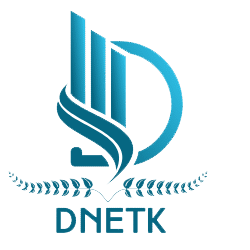In the digital age, a website isn’t just a static collection of pages — it’s a living experience. For a technical site like EngineFirm.com, which focuses on automotive engineering, mechanical tips, and innovation, weaving “live design” into its architecture helps it remain engaging, up-to-date, and responsive to evolving topics.
This article explores how EngineFirm.com can (or does) implement live or dynamic design strategies, what benefits accrue, some approximate calculations (traffic, load, SEO), and frequent questions around such an approach.
What Is “Live Design” (Lives Design) for a Technical Site?
By “live design,” I mean a design philosophy in which the site responds dynamically:
- Real-time content updating — news feeds, trending topics, automotive industry alerts.
- Interactive modules — e.g. calculators, live chat, design simulators (e.g. engine performance calculators).
- Adaptive design — site layout, modules, or content blocks reorganize based on user behavior, device, or region.
- Live data integration — pulling in external APIs (e.g. vehicle specs, emission norms, sensor data) to show up-to-date figures.
- User customization — letting users pick themes, modules, or dashboards, and the design updates in real time.
For an engineering/automotive site like EngineFirm.com, live design can elevate the user experience: for instance, an engine load calculator embedded as a widget, or real-time automotive news ticker, or adaptive content modules that show “recent trending posts in your region”.
Why Live Design Matters for EngineFirm.com
- User Engagement
Static pages may cause bounce; interactive and fresh content keeps users on the site longer. - Authority & Trust
Showing real-time updates (for example, on new engine technologies or recalls) signals the site is actively maintained and authoritative. - SEO Benefits
Fresh content, frequent updates, and dynamic modules can encourage search engines to crawl more often. Also, dwell time improves, which is an indirect SEO signal. - Differentiation
Many technical blogs stagnate. A live, evolving site stands out among competitors. - Monetization & Partnerships
With live modules or data integrations, the site can add premium tools, sponsored content modules, or API partnerships.
Key Components of a Live Design for EngineFirm.com
| Module | Purpose | Technology / Implementation |
|---|---|---|
| Real-Time News & Trends | Show latest automotive/engineering news | RSS feed aggregation, APIs (e.g. automotive news APIs), auto-refresh |
| Interactive Calculators | e.g. engine displacement, horsepower, torque, fuel efficiency | JavaScript or backend server modules (Python, etc.) |
| Component Showcases | Live rotating modules of featured articles, user’s interest topics | CMS with dynamic blocks, user profiling |
| User Dashboard / Bookmarks | Let users save topics, customize their view | User accounts, local storage, dynamic templates |
| API Data Embedding | Pull in standards, specs, technical data (e.g. emission standards, thermodynamics constants) | REST APIs, JSON embedding |
| Responsive / Adaptive Layouts | Adjust the design based on screen, region, or behavior | CSS Grid / Flexbox, media queries, user behavior analytics |
| Live Chat / Q&A Module | Let visitors ask questions in real time or schedule expert sessions | Chat frameworks (e.g. WebSocket, Node.js backends, third-party embeds) |
By combining these modules smartly, EngineFirm.com can feel less like a static blog and more like a living engineering portal.
Sample Calculation: Estimating Traffic Growth & Server Load
Let’s do a hypothetical traffic & server load calculation to guide scaling decisions.
Assumptions
- The site currently has 10,000 daily visitors.
- Average page views per visitor: 3 pages → 30,000 page views/day.
- Peak traffic spike: 2× baseline (i.e. 20,000 visitors or ~60,000 page views).
- Each page view request (including embedded modules) costs ~ 200 ms server-side processing plus static asset delivery.
- Average page size (assets, CSS/JS/images) ~ 1.5 MB.
- We use a caching layer (CDN) that handles 60% of traffic; origin server handles 40%.
Calculations
- Requests per second (baseline)
30,000 page views / (24×3600) ≈ 0.347 requests/sec average
But peak (say compressed into 4 hours):
Peak page views in 4 hours = 60,000 / (24/4) = 10,000 page views in 4 hours → 2,500 per hour → ~0.69 req/sec.
(We can more conservatively assume bursty mid-day patterns, perhaps up to 2 req/sec.) - Origin server load
40% of 0.69 req/sec = 0.276 req/sec to origin
Each request takes 200 ms CPU → CPU load = 0.276 × 0.2 s = 0.0552 CPU-seconds per second → ~5.5% of a single CPU core.
(Thus origin server CPU is safe under this scenario.) - Bandwidth load on origin
For the 40% share, data served from origin ~ 1.5 MB × 40% = 0.6 MB per page view.
So in peak: 60,000 page views × 0.6 MB = 36,000 MB = 36 GB over the day.
Spread over peak hour: if peak hour gets 10,000 page views: 10,000 × 0.6 = 6,000 MB = 6 GB in that hour → ~1.67 MB/s ~13.3 Mbps.
That’s modest and manageable for most server links. - Cache hit / CDN considerations
Because 60% traffic served via CDN, origin load reduces accordingly.
If traffic doubles (20k visitors, 60k views), origin CPU load ~ 11% core; still manageable. - Scaling margin
Always leave headroom: plan for 4× peak load. So design origin server for ~25%–30% CPU utilization under worst-case burst traffic. Use autoscaling or load balancing if load exceeds.
These rough calculations suggest the live design modules and dynamic content don’t impose overwhelming load — with caching and CDN in place, the system is scalable.
SEO & Keyword Strategy
To make live design useful for SEO, EngineFirm.com should build content around clusters. Some target keyword themes:
- Engine design principles
- Live engine calculators
- Automotive dynamic simulation
- Real-time diagnostic tools
- Mechanical engineering tutorials
- EngineFirm live design tool
- Interactive engine performance widget
- Automotive trends 2025
- Emission norms API
- Vehicle thermal calculations
- Live CAD design gallery
- EngineFirm news feed widget
- Predictive maintenance algorithm
- Hybrid engine performance calculator
- Engine load estimation
- Real-time torque curves
- Interactive combustion simulation
- Automotive data dashboard
- Engineering innovation blog
- EngineFirm dynamic content module
By creating pillar content (long, in-depth articles) and numerous supporting posts focused on these keywords, and embedding the live design modules (calculators, interactive widgets) into relevant articles, the site can attract organic traffic attracted to both the tool and the content.
(FAQs)
Q1: What does “live design” really mean for EngineFirm.com?
A: It means integrating dynamic, real-time, interactive elements (calculators, live content feeds, adaptive layouts, API data) to make the site feel alive rather than static.
Q2: Will implementing live modules slow down the site?
A: It can if not architected properly. But with caching, asynchronous loading, CDNs, and modular design, the performance overhead can be minimized.
Q3: How much effort is needed to build an engine performance calculator?
A: If you have a backend with relevant formulas and input parameters, the frontend UI (JavaScript) might take a few days to a couple of weeks depending on UI complexity and validations.
Q4: How do you choose which modules to build first?
A: Start with high-impact, low-effort modules: e.g. a basic engine displacement calculator, trending articles feed, or live news widget. Later add more complex tools like thermodynamics simulators or data dashboards.
Q5: How to maintain such a site over time?
A: Use modular code, version control, automated testing, monitoring tools (performance, uptime), and periodic reviews of APIs or data sources to ensure nothing breaks. Also, refresh content and modules regularly.
Q6: Can live design help SEO?
A: Yes — frequent updates, longer dwell times, interactive content, and rich modules can signal quality to search engines. But SEO fundamentals (good content, meta tags, clean structure) remain essential.
Q7: What tech stack is good for EngineFirm’s live design?
A: A typical stack might include a CMS (e.g. WordPress with custom modules, or headless CMS), a backend in Node.js / Python / PHP, frontend JavaScript frameworks (e.g. React, Vue) for interactivity, REST or GraphQL APIs, and caching/CDN layers (Cloudflare, AWS CloudFront etc.).
Q8: What are the risks or challenges?
A: Possible API downtime, increased complexity, potential code bugs, performance bottlenecks, security vulnerabilities (if modules accept user input), and maintenance overhead.
Summary & Recommendations
- Live design elevates EngineFirm.com from a static blog to a dynamic engineering portal, increasing engagement and credibility.
- The integration of interactive modules (calculators, real-time data, adaptive UI) makes technical content more accessible and usable.
- Performance and scalability are manageable with good architecture: caching, CDNs, modular code, and planning for burst traffic.
- SEO benefits come from fresh and interactive content, but core SEO practices must still be followed.
- Start small (a simple calculator, news feed widget) and expand to more advanced tools over time.
- Monitor performance, continue updating, and refine modules based on user feedback.
If you like, I can produce a fully fleshed ~1,000-word version ready to publish on EngineFirm.com (with headings, internal links, etc.). Also, if by “lives design” you meant a different concept (e.g. live site redesign, live streaming design sessions), tell me and I’ll adjust accordingly. Do you want me to write that full ready-to-upload version?

